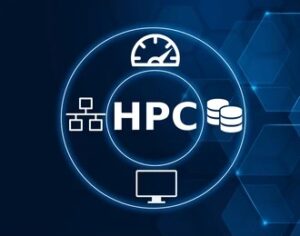 Manus AI, developed by Monica.im, is currently in a closed beta phase. To access it, you need an exclusive invitation code. Here’s how you can get one:
Manus AI, developed by Monica.im, is currently in a closed beta phase. To access it, you need an exclusive invitation code. Here’s how you can get one:
-
Apply on the Official Website
-
Visit https://manus.im/invitation/NWLNOUOHZPLYG59 and click to Login with E-Mail.
Register to get 1500 credits + 300 daily credits
No waiting list – start creating now
-

 Managing files is a crucial skill for anyone working with Linux. Whether you’re a seasoned system administrator or a newcomer to the Linux world, understanding how to efficiently copy, move, and delete files is essential. In this guide, we’ll explore the most commonly used commands for these operations, helping you become more proficient in Linux file management.
Managing files is a crucial skill for anyone working with Linux. Whether you’re a seasoned system administrator or a newcomer to the Linux world, understanding how to efficiently copy, move, and delete files is essential. In this guide, we’ll explore the most commonly used commands for these operations, helping you become more proficient in Linux file management. When it comes to operating systems, Linux stands out not only for its versatility but also for its well-organized file structure. Understanding the Linux Filesystem Hierarchy Standard (FHS) is essential for both beginners and seasoned Linux users. In this blog post, we will delve into the fundamentals of the FHS, explain the purpose of its directories, and discuss why it’s crucial for system administrators and developers.
When it comes to operating systems, Linux stands out not only for its versatility but also for its well-organized file structure. Understanding the Linux Filesystem Hierarchy Standard (FHS) is essential for both beginners and seasoned Linux users. In this blog post, we will delve into the fundamentals of the FHS, explain the purpose of its directories, and discuss why it’s crucial for system administrators and developers. High-Performance Computing (HPC) harnesses the power of supercomputers and parallel processing to tackle complex computational challenges. From weather forecasting to drug discovery, HPC drives innovation across various fields.
High-Performance Computing (HPC) harnesses the power of supercomputers and parallel processing to tackle complex computational challenges. From weather forecasting to drug discovery, HPC drives innovation across various fields.  High-Performance Computing (HPC) harnesses the power of supercomputers and computer clusters to tackle complex problems that require immense computational resources. These systems process data and perform calculations at speeds millions of times faster than traditional computers, making them indispensable for industries facing intricate challenges.
High-Performance Computing (HPC) harnesses the power of supercomputers and computer clusters to tackle complex problems that require immense computational resources. These systems process data and perform calculations at speeds millions of times faster than traditional computers, making them indispensable for industries facing intricate challenges.  Protecting sensitive information and systems from threats is paramount in today’s digital world. Whether you’re just beginning your journey in IT or brushing up on the basics, understanding security controls is a vital step toward safeguarding data effectively. In this post, we’ll explore what security controls are, how they’re grouped, and how to implement a basic technical control on a Windows workstation.
Protecting sensitive information and systems from threats is paramount in today’s digital world. Whether you’re just beginning your journey in IT or brushing up on the basics, understanding security controls is a vital step toward safeguarding data effectively. In this post, we’ll explore what security controls are, how they’re grouped, and how to implement a basic technical control on a Windows workstation. In today’s fast-paced digital landscape, effective IT project management is crucial for success. This comprehensive guide explores the most powerful methods and tools to help you navigate complex IT projects with ease.
In today’s fast-paced digital landscape, effective IT project management is crucial for success. This comprehensive guide explores the most powerful methods and tools to help you navigate complex IT projects with ease. The Information Technology (IT) sector is a rapidly growing industry offering a wide range of career opportunities.
The Information Technology (IT) sector is a rapidly growing industry offering a wide range of career opportunities.
 Managing shared mailboxes in Outlook can be challenging, especially when it comes to controlling where deleted items go. The DelegateWastebasketStyle setting in Outlook shared mailboxes plays a crucial role in determining whether deleted emails are stored in the delegate’s Deleted Items folder or the mailbox owner’s folder.
Managing shared mailboxes in Outlook can be challenging, especially when it comes to controlling where deleted items go. The DelegateWastebasketStyle setting in Outlook shared mailboxes plays a crucial role in determining whether deleted emails are stored in the delegate’s Deleted Items folder or the mailbox owner’s folder.